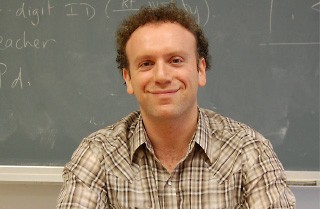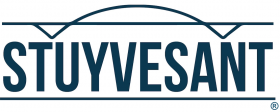Faculty Interview: Robert Sandler

Question: How long have you been at Stuyvesant and what do you teach?
Sandler: I’ve been at Stuyvesant since 2000. I teach AP American History – that’s my specialty – and I also teach two electives, Jewish history and New York City History. In the past, I’ve also taught Government and AP Government. And I also used to coach the handball team.
Question: You’re known for using the city as a classroom. How does that work?
Sandler: The city is an amazing resource. In my New York City History class, we go to Harlem. And we actually visit some synagogues, because Jewish Harlem used to be one of the biggest Jewish neighborhoods in the early 20th century, along with Warsaw and other cities in Eastern Europe. So we look at synagogues that are now churches. The kids can see the Jewish stars, but now they see the sign in the front that talks about how it’s an African-American church. And we go to Alexander Hamilton’s house, the Grange. We talk about how that neighborhood up above 125th St. has a long history going back to the Revolutionary Era. And we eat soul food.
A lot of the kids have never been to Harlem. Even though they’ve grown up in New York their whole lives, often they stay in their own neighborhoods. In my Jewish History class, only about a third of the kids are Jewish. So this is the first time most of them have ever been in a sukkah, which they sometimes see when I take them to Crown Heights to visit the Chassidic community, or a synagogue.
I also take students to the 9/11 Memorial, and I’m one of the few teachers to do that. Maybe it’s too difficult for some people. I call this tour “The 9/11 memorial and Its Neighbors,” and situate that memorial in context and go all the way back to the Dutch period. And we see where Peter Stuyvesant’s mansion used to be, and we look at Hamilton’s grave outside of Trinity Church, and we see where in 1920 some anarchists tried to destroy J.P. Morgan’s bank.
So using the city is my favorite part of teaching. A lot of schools wouldn’t give me the freedom to do that. And a lot of the teachers at Stuyvesant are very generous with letting me take the kids during their time to explore, and I am very thankful to Principal Zhang as well for being so supportive. She understands the importance of using the city as a classroom.
Question: You’ve won some major teaching awards. Can you tell us about those?
Sandler: The first award I won was through the 9/11 Tribute Center. I had developed a whole curriculum unit on teaching about 9/11 through film and literature and the primary documents–comparing it with other disasters in New York City history. So that kind of got me started on that teaching award roll. I think they kind of build on each other.
Then I applied for the National Council for the Social Studies National Teacher of the Year Award. NCSS is a huge organization with national membership. I didn’t think I would win, because it’s very competitive. But I put together an application and talked about all the walking tours I do, and the paintings I use in the Metropolitan Museum of Art, and about songs we use. And then I won and it was amazing recognition! They flew me to St. Louis for the award ceremony, and I ended up meeting Oliver Stone there. And I schmoozed with him and the next year, I got Oliver Stone to come to Stuyvesant with a professor, and they did a screening in the Stuyvesant auditorium for 800 people on a big screen of one of the episodes of their Untold History from Showtime, which was all about Truman and the atomic bomb. And then I organized a book signing with a red velvet rope, thinking that would be really memorable for the students. And all the kids got to shake his hand and take pictures with him. I think it was just a great experience for the kids to meet this famous film director.
And the most recent award I won was from the Gilder Lehrman Institute of American History. That was for the being the top state history teacher. The New York City school chancellor Carmen Fariña actually came to Stuyvesant for the ceremony. One of the students who nominated me also spoke. Gilder Lehrman is an amazing organization and they do great things to support history teachers. And they selected me, but I think part of it was that my students had done a seven or eight minute film on history, where they had to use primary documents, that I sent that along with my application. I think the judges were very impressed by that.
It’s nice to be recognized in this job. You often feel that you’re grading endless exams, and the handwriting is difficult, and your eyes can start to hurt, and you’re staying up late to write endless recommendations. And when you get one of these awards, you feel special and unique and it’s great.
Question: What is it that you think you do as a teacher that resonates with your students?
Sandler: I treat them like they’re college students in some ways. I give them a very high level of content, give them access to historiography, showing them things that are that are kind of untold, that people don’t know about, sharing new perspectives, and use lots of different resources, having them do big debates in front of the classroom where they role-play. That all helps them learn. For instance, I have the students role-play the Federalists and Anti-Federalists, and they dress up in wigs and fight about whether or not the Constitution should be ratified. It helps them realize these weren’t really Founding Fathers – they were more like Founding Brothers who disagreed or were insecure or anxious. They didn’t know at the beginning that we’d be the superpower we are today.
So my students are smart kids, and they react to this kind of teaching. They feed off of it, and they start getting excited.
Question: What do you like the most and least about teaching at Stuyvesant?
Sandler: The least is that there’s just too many students. In the hallways, it’s too crowded. It can be overwhelming. There’s too many recommendations to write. There’s too many exams to grade. I wish we could change that and make the school smaller and more intimate.
When I like the best is when I’m on my walking tours and I’m with the kids and we’re eating pastrami and were talking about Jewish anarchists and Jewish socialists, and they want to know well, what happened to this world? Where did all these people go? What happened to all the sepia toned photographs? Or when we’re down of the 9/11 Memorial and I tell them about my experience – I was at Stuyvesant on 9/11 and I had to help students evacuate. Or when were having a really good discussion, and I can see the kids are engaged. I think that’s my favorite thing.
I’ll have students come back and burst into my classroom and tell the students that they’re lucky to have me as a teacher. And students sometimes give me presents. Last year, some students figured out my birthday, somehow, and got a collection of every single New York Times front page from that date going from 1977, when I was born, all the way to the present. That was really nice. I also received photos in a frame from a trip when we went to Harlem and Morningside Heights that all the students had signed on the back, which was also a lovely thing to do. And one student gave me a list of all the historical quotes from the semester that I had used. She had been writing them down and put them in a frame in the shape of an American flag. It was amazing!
Teaching at Stuy is incredibly gratifying. When I talk to other people, I rarely find anyone who finds as much fun and excitement in their jobs as I do in mine.
